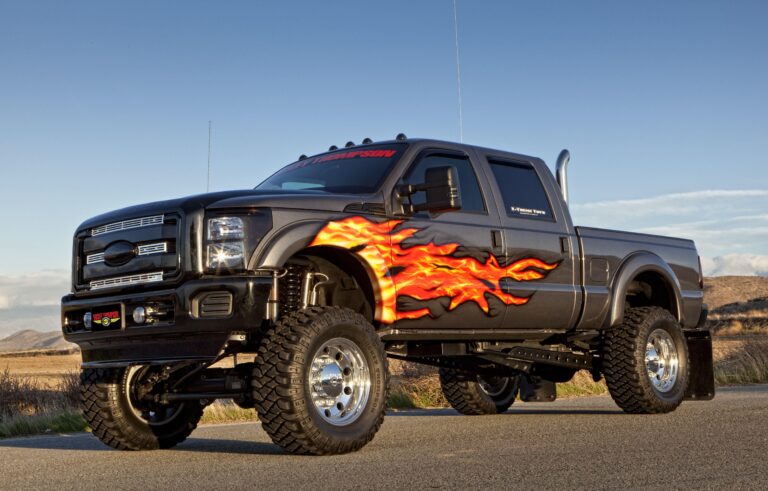1984 Chevy Trucks For Sale: A Comprehensive Buyer’s Guide
1984 Chevy Trucks For Sale: A Comprehensive Buyer’s Guide cars.truckstrend.com
The year 1984 holds a special place in the hearts of classic truck enthusiasts, representing a sweet spot in the highly celebrated "Square Body" era of Chevrolet C/K series trucks. For many, the 1984 Chevy truck isn’t just a vehicle; it’s a nostalgic trip back to a time of rugged simplicity, iconic design, and unparalleled utility. Whether you’re a seasoned collector, a first-time classic truck owner, or simply seeking a reliable workhorse with vintage charm, understanding what to look for when considering 1984 Chevy trucks for sale is crucial. This guide will delve into the enduring appeal, key features, buying considerations, and practical advice for acquiring one of these timeless machines.
The Enduring Appeal of the Square Body
1984 Chevy Trucks For Sale: A Comprehensive Buyer’s Guide
The 1984 Chevy truck belongs to the third generation of C/K series pickups, affectionately known as "Square Bodies," which ran from 1973 to 1987 (and Suburbans/Blazers until 1991). This era is renowned for its straightforward, boxy design – a stark contrast to the more aerodynamic shapes that would follow. This aesthetic, combined with their reputation for durability and ease of maintenance, has cemented their status as highly desirable classics.
The appeal of a 1984 Chevy truck stems from several factors:
- Iconic Design: The clean lines, large grilles, and distinct proportions are instantly recognizable and widely admired.
- Durability: Built with robust frames and often equipped with time-tested engines and transmissions, these trucks were engineered to last.
- Versatility: From basic work trucks to surprisingly comfortable daily drivers, they could be configured for a multitude of purposes.
- Nostalgia: For many, owning a 1984 Chevy truck is about recapturing a piece of their past or connecting with a simpler automotive era.
- Customization Potential: The aftermarket support for Square Bodies is immense, allowing for endless possibilities in restoration, modification, or personalization.

Key Models and Configurations of 1984
When searching for a 1984 Chevy truck, you’ll encounter a variety of models and configurations. Understanding these distinctions is vital for finding the truck that best suits your needs.
- C/K Series Designation:

- C-Series: Denotes two-wheel-drive (2WD) models.
- K-Series: Denotes four-wheel-drive (4WD) models.
- Weight Classes:

- 10-series (C10/K10): Half-ton trucks, typically the most common and popular for daily driving and light hauling.
- 20-series (C20/K20): Three-quarter-ton trucks, offering increased payload and towing capacity.
- 30-series (C30/K30): One-ton trucks, designed for heavy-duty work, often seen as dually (dual rear wheel) setups.
- Body Styles:
- Regular Cab: The most common configuration, offering seating for two or three.
- Extended Cab (Club Cab/Custom Deluxe): Less common in 1984, offering a small rear seating area or additional storage.
- Crew Cab: Four full doors and seating for up to six, often found on K30 models.
- Bed Lengths:
- Short Bed (Fleetside or Stepside): Typically 6.5 feet, popular for aesthetics and maneuverability.
- Long Bed (Fleetside or Stepside): Typically 8 feet, preferred for utility and hauling.
- Stepside: Features fenders that protrude from the bed, offering a classic, distinctive look. Fleetside is the more common smooth-sided bed.
- Related Vehicles: While the focus is on pickups, remember that the 1984 Suburban (full-size SUV) and Blazer (full-size 2-door SUV) share many mechanical components and the Square Body aesthetic.
Engine and Drivetrain Options
The 1984 Chevy trucks offered a range of robust powertrains, known for their simplicity and reliability.
- Gasoline Engines:
- 250 CID (4.1L) Inline-Six: A venerable and durable inline-six, primarily found in C10 models, known for its torque and longevity.
- 262 CID (4.3L) V6: Introduced in later Square Body years, it provided a good balance of power and efficiency.
- 305 CID (5.0L) Small Block V8: A common choice, offering adequate power for most applications.
- 350 CID (5.7L) Small Block V8: The legendary "350" is arguably the most popular and versatile engine. Known for its power, reliability, and vast aftermarket support.
- 454 CID (7.4L) Big Block V8: Found in heavier-duty C20/C30 and K20/K30 models, delivering immense torque for towing and hauling.
- Diesel Engines:
- 6.2L Detroit Diesel V8: A naturally aspirated diesel engine, offering better fuel economy than its gasoline counterparts, but with less power. Known for its distinct sound and longevity when properly maintained.
- Transmissions:
- Manual Transmissions: Typically 3-speed or 4-speed manuals, including the Muncie SM465 (a heavy-duty 4-speed with a "granny low" first gear).
- Automatic Transmissions: Common options included the TH350 (Turbo-Hydramatic 350) and TH400 (Turbo-Hydramatic 400) – both legendary for their strength. The 700R4 (Turbo-Hydramatic 700R4) was also available, offering a fourth overdrive gear for improved highway fuel economy.
What to Look For When Buying a 1984 Chevy Truck
Purchasing a vintage vehicle requires a thorough inspection. Here are critical areas to scrutinize:
- Rust: This is the primary enemy of Square Bodies. Check:
- Cab Corners and Rocker Panels: Extremely common rust spots.
- Fender Wells and Inner Fenders: Especially behind the front wheels.
- Bed Floors and Supports: Particularly under bed liners.
- Tailgate: Prone to rust at the bottom edge.
- Frame: Inspect for pitting, cracks, or repairs, especially near suspension mounts.
- Windshield and Rear Window Channels: Water leaks here lead to floor pan rust.
- Engine Condition:
- Listen for knocks, excessive lifter noise, or unusual sounds.
- Check for oil leaks, coolant leaks, and signs of overheating.
- Look for excessive smoke from the exhaust (blue for oil, white for coolant, black for rich fuel mixture).
- Transmission and Drivetrain:
- Manual: Ensure smooth shifting, no grinding, and a good clutch feel.
- Automatic: Check for smooth engagement in all gears, no slipping, and proper fluid level/color.
- 4WD: Test engagement of 4-high and 4-low, listen for clunks or grinding from transfer case and differentials.
- Suspension and Steering:
- Look for worn ball joints, tie rods, and bushings.
- Check shock absorbers for leaks.
- Feel for excessive play in the steering wheel.
- Brakes: Test for firm pedal feel, straight stopping, and no grinding noises.
- Electrical System: Test all lights, gauges, wipers, heater fan, and radio. Wiring can degrade over time.
- Interior:
- Dashboard: Prone to cracking from sun exposure.
- Seat upholstery: Check for tears, foam condition.
- Door panels, headliner, carpet: Assess overall condition and completeness.
- Documentation: A clear title is essential. Service records, if available, can provide valuable insight into the truck’s history and maintenance.
Determining Value and Pricing
The price of a 1984 Chevy truck can vary wildly based on several factors.
- Condition: This is the most significant factor. A fully restored, show-quality truck will command a premium over a rusty "parts truck."
- Originality: Highly original, unmolested examples often fetch higher prices.
- Mileage: Lower mileage generally means higher value, assuming condition aligns.
- Engine/Transmission: A desirable engine (e.g., 350 V8) and a working automatic or specific manual transmission can influence price.
- Options: Factory air conditioning, power windows/locks, cruise control, and specific trim packages can add value.
- Model/Configuration: C10 short-bed trucks, especially those with desirable engine/transmission combos, often command the highest prices due to their popularity for customization and daily driving. K-series 4x4s also hold strong value.
Resources for Valuation:
- NADA Guides (Classic Car Values): Provides a general range based on condition.
- Hagerty Valuation Tool: Another excellent resource for classic vehicle pricing.
- Recent Sales Data: Look at completed auctions on sites like eBay Motors or Bring a Trailer to see what similar trucks have actually sold for.
Where to Find 1984 Chevy Trucks For Sale
The market for Square Bodies is robust, meaning there are many avenues to explore:
- Online Marketplaces:
- eBay Motors: Wide selection, auction format.
- Craigslist/Facebook Marketplace: Local listings, often good for project trucks or finding deals. Be cautious of scams.
- Bring a Trailer / Hemmings Auctions: Higher-end, more meticulously documented vehicles.
- ClassicCars.com / AutoTrader Classics: Dedicated classic vehicle listings.
- Specialized Forums & Websites: Many forums dedicated to Square Body trucks have "for sale" sections where enthusiasts sell their vehicles.
- Local Auctions & Swap Meets: Can be hit-or-miss but sometimes yield hidden gems.
- Word-of-Mouth: Let friends, family, and local mechanics know you’re looking.
Restoration vs. Preservation: A Buyer’s Choice
When looking at 1984 Chevy trucks for sale, you’ll encounter a spectrum from heavily customized to completely original. Deciding whether you want a truck to restore, preserve, or simply drive as-is is a key decision.
- Restoration: Involves bringing the truck back to "as-new" condition, often requiring significant time, money, and skill. This is ideal for highly original, numbers-matching vehicles or those with sentimental value.
- Preservation: Focuses on maintaining the truck’s original condition and patina, addressing only necessary repairs. This celebrates the vehicle’s history and character.
- Driver Quality: A truck that is mechanically sound and presentable enough for regular use, but not perfect. These are often the best value for those wanting to enjoy the truck without the pressure of a show vehicle.
Regardless of your choice, the availability of aftermarket parts for Square Bodies is excellent, making repairs and upgrades relatively easy.
Common Upgrades and Modifications
Part of the appeal of the 1984 Chevy truck is its modifiability. Many owners opt for upgrades to enhance performance, comfort, or aesthetics.
- Suspension: Lowering kits for a street-performance look, or lift kits for off-road capability.
- Engine Swaps: LS engine conversions (installing a modern GM LS V8) are incredibly popular, offering significant power, reliability, and fuel efficiency improvements.
- Brakes: Disc brake conversions (especially for the rear) or upgraded front disc brakes for better stopping power.
- Interior: Modern seating, upgraded sound systems, digital gauges, or new air conditioning systems.
- Wheels and Tires: A vast array of options to change the truck’s stance and appearance.
Practical Advice and Actionable Insights
- Set a Budget: Beyond the purchase price, factor in immediate repairs, insurance, registration, and potential upgrades.
- Patience is Key: Don’t rush into a purchase. The right truck will come along.
- Pre-Purchase Inspection (PPI): If possible, have a trusted mechanic (ideally one familiar with vintage vehicles) inspect the truck before you buy, especially if you’re not mechanically inclined.
- Test Drive: Drive the truck thoroughly. Listen for unusual noises, check how it shifts, brakes, and handles.
- Ask Questions: Don’t hesitate to ask the seller about the truck’s history, maintenance, and any known issues.
- Join Forums: Connect with other Square Body owners online. They are a wealth of knowledge and can offer advice or even leads on trucks for sale.
1984 Chevy Truck Price Guide (Estimated Values)
The following table provides a general estimate for 1984 Chevy C10/K10 trucks in various conditions. Prices can fluctuate significantly based on location, specific options, engine, transmission, and market demand. These are approximate values for a standard C10 short bed or K10 long bed. Specialty models (e.g., Crew Cabs, K30 dually) or highly original, low-mileage examples will command higher prices.
| Condition Category | Description | Estimated Price Range (USD) |
|---|---|---|
| Parts Truck | Non-running, significant rust/damage, incomplete, suitable for parts or full frame-off restoration. | $1,000 – $3,500 |
| Fair | Running but needs extensive mechanical and cosmetic work. Significant rust, worn interior, non-original. | $3,500 – $8,000 |
| Good Driver | Mechanically sound, minimal rust (easily repairable), decent paint, clean interior. Usable as a daily. | $8,000 – $18,000 |
| Excellent | Well-maintained, minimal to no rust, good paint, clean interior, solid mechanics. Ready to enjoy. | $18,000 – $30,000+ |
| Show Quality | Meticulously restored or exceptionally well-preserved original. Near-flawless, often trailered. | $30,000 – $60,000+ |
Note: These prices are estimates and can vary greatly. Always perform your own research and inspection.
Frequently Asked Questions (FAQ)
Q1: Why are 1984 Chevy trucks so popular?
A1: Their popularity stems from their iconic "Square Body" design, legendary durability, ease of maintenance, vast aftermarket support for parts and customization, and a strong sense of nostalgia for a simpler automotive era.
Q2: Are parts readily available for 1984 Chevy trucks?
A2: Yes, absolutely. Due to the long production run of the Square Body generation and their enduring popularity, most mechanical, body, and interior parts are readily available from aftermarket suppliers and specialized classic truck parts retailers.
Q3: What kind of fuel economy can I expect from a 1984 Chevy truck?
A3: Fuel economy is generally not a strong suit. Depending on the engine (especially V8s and big blocks) and transmission, expect anywhere from 8-15 miles per gallon (MPG). Diesel models (6.2L) might offer slightly better mileage, in the 15-20 MPG range.
Q4: Can a 1984 Chevy truck be a reliable daily driver?
A4: With proper maintenance and potentially some modern upgrades (like an LS swap or better brakes), a 1984 Chevy truck can certainly be a reliable daily driver. However, remember they lack modern safety features and conveniences.
Q5: What’s the difference between a C and a K series truck?
A5: "C" denotes a two-wheel-drive (2WD) truck, while "K" denotes a four-wheel-drive (4WD) truck.
Q6: What should I expect to spend on maintenance for a 1984 Chevy truck?
A6: If you purchase a well-maintained "driver quality" truck, routine maintenance costs should be comparable to any older vehicle. However, if you buy a "project" truck, anticipate significant investment in parts and labor to bring it up to reliable operating condition. Parts are generally inexpensive, but labor can add up.
Conclusion
The 1984 Chevy truck stands as a testament to American automotive design and engineering of its time. Offering a blend of rugged utility, timeless aesthetics, and a burgeoning classic car community, these trucks represent a fantastic opportunity for enthusiasts. Whether you envision a meticulous restoration, a custom build, or simply a reliable vintage cruiser, acquiring a 1984 Chevy truck for sale is an investment in a piece of history that promises both practical utility and immense driving pleasure. With careful research, a thorough inspection, and a clear understanding of your goals, you can find the perfect Square Body to call your own and embark on your own automotive adventure.





